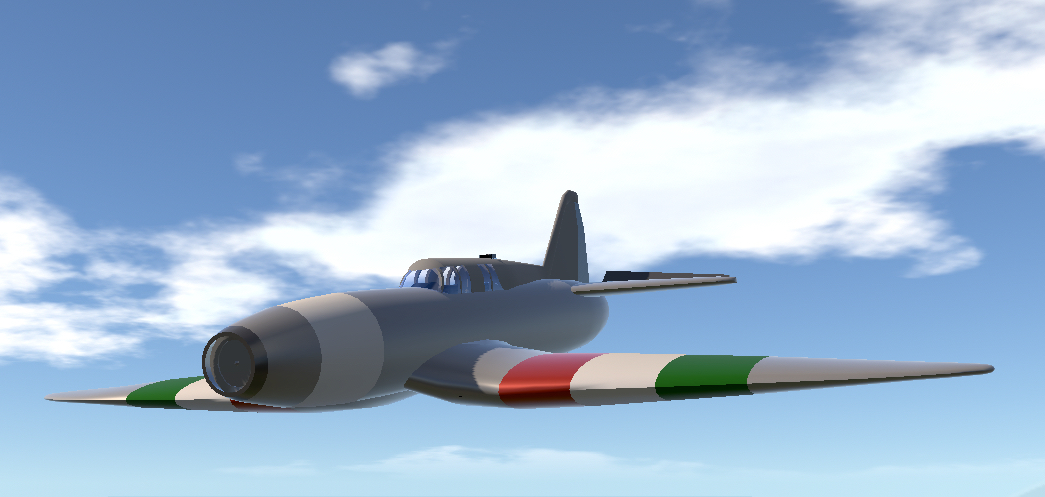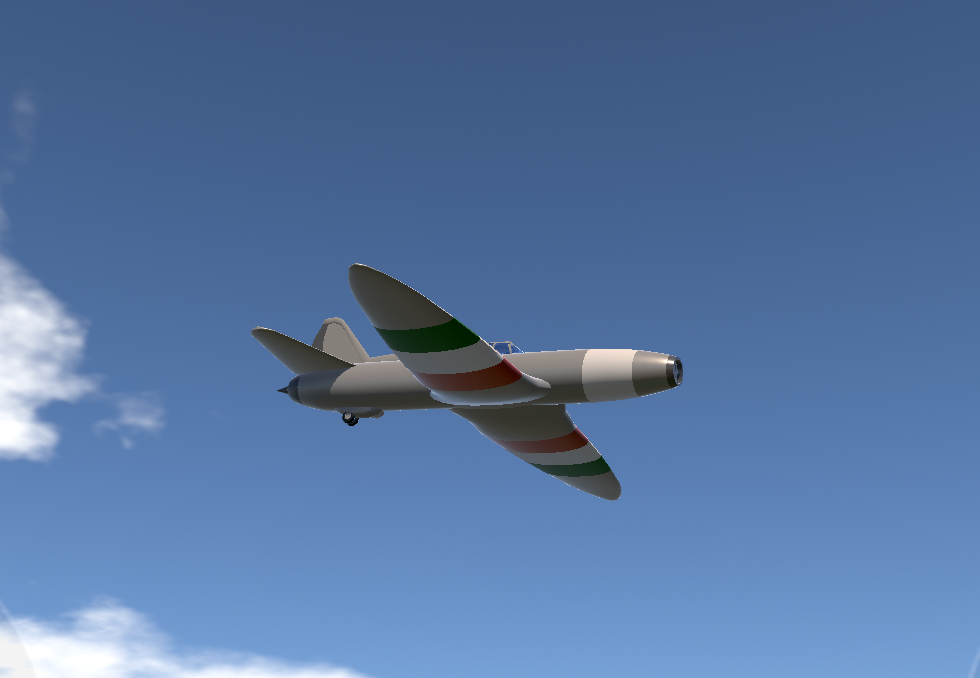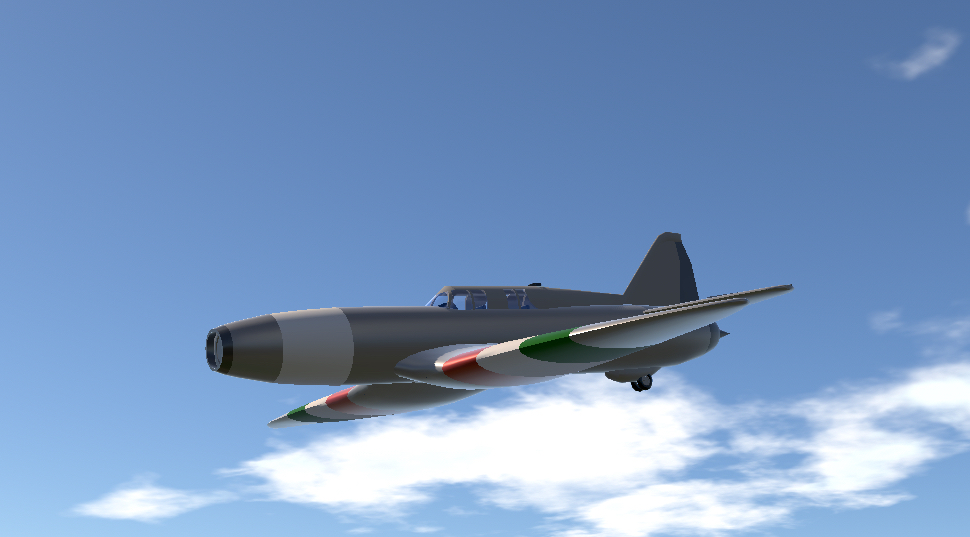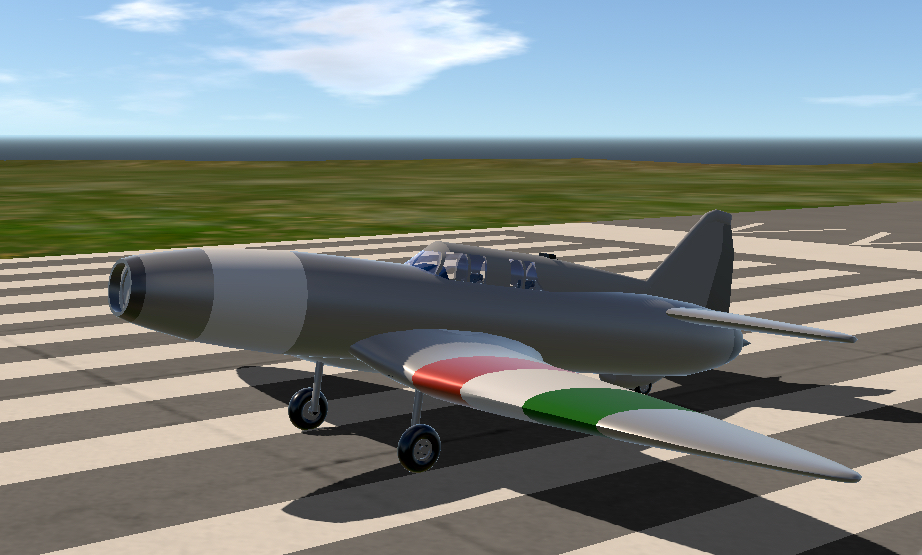Wikipedia
The Caproni Campini N.1, also known as the C.C.2, is an experimental jet aircraft built in the 1930s by Italian aircraft manufacturer Caproni. The N.1 first flew in 1940 and was briefly regarded as the first successful jet-powered aircraft in history, before news emerged of the German Heinkel He 178's first flight a year earlier.
During 1931, Italian aeronautics engineer Secondo Campini submitted his studies on jet propulsion, including a proposal for a so-called thermo-jet to power an aircraft. Following a high-profile demonstration of a jet-powered boat in Venice, Campini was rewarded with an initial contract issued by the Italian government to develop and manufacture his proposed engine. During 1934, the Regia Aeronautica (the Italian Air Force) granted its approval to proceed with the production of a pair of jet-powered prototype aircraft. To produce this aircraft, which was officially designated as the N.1, Campini formed an arrangement with the larger Caproni aviation manufacturer.
The N.1 is powered by a motorjet, a type of jet engine in which the compressor is driven by a conventional reciprocating engine. On 27 August 1940, the first flight of the N.1 took place at the Caproni facility in Taliedo, outside of Milan, flown by Mario de Bernardi. On 30 November 1941 the second prototype was flown by De Bernardi and engineer Giovanni Pedace from Milan's Linate Airport to Rome's Guidonia Airport, in a highly publicized event that included a fly-past over Rome and a reception with Italian Prime Minister Benito Mussolini. Testing of the N.1 continued into 1943, when work on the project was disrupted by the Allied invasion of Italy.
The N.1 achieved mixed results; while it was perceived and commended as a crucial milestone in aviation (until the revelation of the He 178's earlier flight), the performance of the aircraft was unimpressive. Specifically, it was slower than many existing conventional aircraft of the era, while the motorjet engine was incapable of producing sufficient thrust to deliver adequate performance for a fighter aircraft. Campini embarked on further projects, such as the Reggiane Re.2007, but these involved the indigenously-developed motorjet being replaced with a German-provided turbojet. As such, the N.1 programme never led to any operational combat aircraft, and the motorjet design was soon superseded by more powerful turbojets. Only one of the two examples of the N.1 to have been constructed has survived to the present day.
Background (Wikipedia)
During 1931, Italian aeronautics engineer Secondo Campini submitted a report to the Regia Aeronautica (the Italian Air Force) on the potential of jet propulsion; this report included his proposals for one such implementation, which he referred to as a thermo-jet. That same year, Campini established a company, with his two brothers, called the "Velivoli e Natanti a Reazione" (Italian for "Jet Aircraft and Boats") to pursue the development of this engine. In April 1932, the company demonstrated a pump-jet propelled boat in Venice, Italy. The boat achieved a top speed of 28 knots (32 mph; 52 km/h), a speed comparable to a boat with a conventional engine of similar output. The Italian Navy, who had funded the development of the boat, placed no orders but did veto the sale of the design outside of Italy.
During 1934, the Regia Aeronautica granted approval for the development of a pair of prototypes, along with a static testbed, for the purpose of demonstrating the principle of a jet aircraft, as well as to explore potential military applications. As his company lacked the necessary industrial infrastructure for such endeavors, Campini formed an arrangement with the larger Caproni aviation manufacturer, under which the latter provided the required material assistance for the manufacturing of the prototypes. Under this relationship, Campini developed his design, which later received the official Italian Air Force designation of N.1.
Historian Nathanial Edwards has contrasted the relative openness of Italian early jet development work against the high levels of secrecy present within other nation's programmes, such as Britain and Germany. He speculated that this was due to desire of the Italian government to be perceived as possessing a modern and advanced aviation industry, being keen to acquire national prestige and renown for such achievements. Edwards went on to claim that the practicality of the N.1 design was undermined by political pressure to speed the programme along so that Italy would be more likely to be the first country in the world to perform a jet-powered flight.
Design (Wikipedia)
The Caproni Campini N.1 is an experimental aircraft, designed to demonstrate the practicality of jet propulsion and its viability as an engine for aircraft. It was a monoplane built entirely out of duralumin, with an elliptical wing. The initial aircraft lacked elements such as a pressurized cabin; however, these improvements were featured on the second prototype. However, flight testing quickly revealed that, due to the excessive heat output of the propulsion system, the canopy had to be left permanently open as a mitigating measure.
The engine of the N.1 differs substantially from the later-produced turbojet and turbofan engines. One crucial difference in Campini's design is that the compressor – a three-stage, variable-incidence one, located forward of the cockpit – was driven by a conventional piston engine, this being a 900 hp (670 kW), liquid-cooled Isotta Fraschini unit. The airflow provided by the compressor was used to cool the engine before being mixed with the engine's exhaust gasses, thus recovering most of the heat energy that in traditional piston-propeller designs would be wasted. A ring-shaped burner then injected fuel into the gas flow and ignited it, immediately before the exhaust nozzle, to further increase thrust.
In practice the engine provided enough thrust for flight without activating the rear burner, making the design somewhat similar to a ducted fan coupled to an afterburner. Campini referred to this configuration as being a thermojet, although it has since become commonly known as motorjet. However, despite the elaborate design, the relatively small size of the duct limited the mass flow and thus the propulsive efficiency of the engine. In modern designs this is offset through high overall pressure ratios, which could not be achieved on the N.1, therefore resulting in relatively low thrust and poor fuel efficiency. Ground tests performed with the static testbed produced a thrust of around 700 kgf (1,500 lbf).
In Game








IRL







Enjoy!
Specifications
General Characteristics
- Predecessor Axis powers Challenge
- Created On iOS
- Wingspan 50.8ft (15.5m)
- Length 43.3ft (13.2m)
- Height 15.2ft (4.6m)
- Empty Weight 21,236lbs (9,632kg)
- Loaded Weight 36,840lbs (16,710kg)
Performance
- Power/Weight Ratio 1.738
- Wing Loading 96.2lbs/ft2 (469.5kg/m2)
- Wing Area 383.1ft2 (35.6m2)
- Drag Points 10370
Parts
- Number of Parts 130
- Control Surfaces 8
- Performance Cost 577





@GuardianAerospace no thank you for participating
@Hahahahaahahshs Thank you for 2nd place! I appreciate it very much!
Thank you @Hahahahaahahshs!
I'm gonna give this plane a 21/30 good job 👏👏👏👏👏👏👏👏👏👏
Thanks @Mousewithamachinegun123 for helping me with yaw problems
🇮🇹🤌
@GuardianAerospace may be best one yet
@GuardianAerospace I just posted another aircraft
@Hankthetank20292 ty!
@GuardianAerospace Buetiful aircraft
@guardianaerospace 哦好的
@TheAirAndCargoCorporation it is Italian, all Italian planes are strange Lol
@guardianaerospace 你好,这架飞机很奇怪但是很好
@Christiant2 Tysm for ur support!
@Noob101 Lol thankfully @Mousewithamachinegun123 got it fixed
THE FINAL RELEASE! :D wish you the best of luck in the challenge!
@GuardianAerospace good work lol saw the post you made earlier which you removed
Glad you got it working!